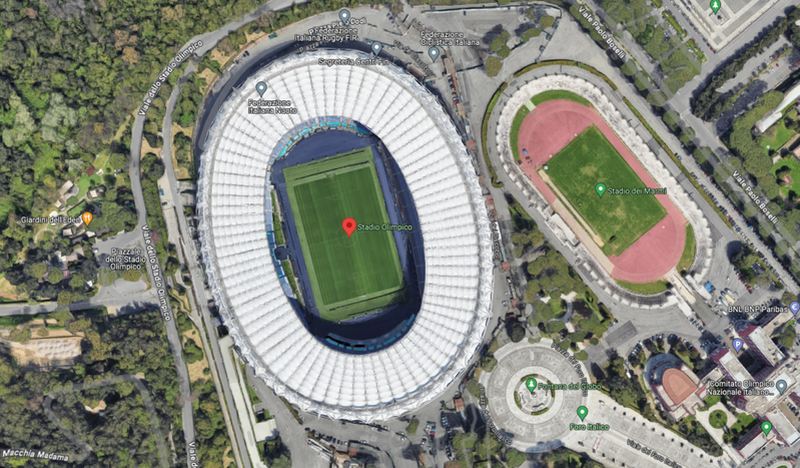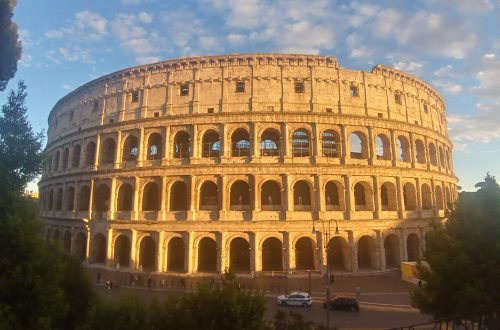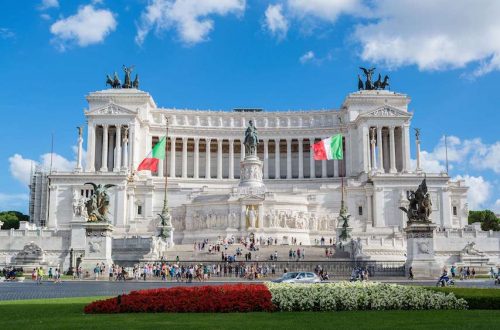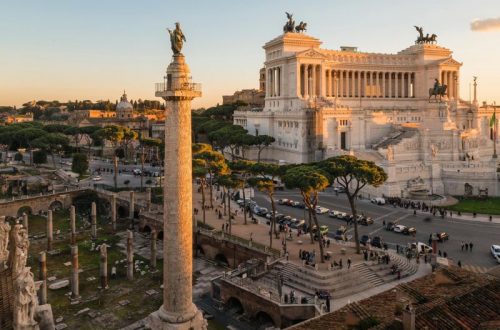
The Olympic stadium
The Olympic stadium is one of the symbols of the Roman people, divided between two sides for a century: Romanists and Lazio supporters. The venue for major matches in our league and even a World Cup final, the venue boasts a UEFA level 4 stadium classification, which allows it to host the finals of the two most important club competitions, the Champions League and ‘Europa League.
It is the largest sports complex in the city and one of the largest in all of Europe, which makes it very famous abroad too.
The history of the Olympic stadium in Rome is linked to that of fascism, since in the regime’s vision sport is an important vehicle of propaganda and it is therefore necessary to equip various cities with stadiums and sports facilities. The works were commissioned by the National Opera Balilla and directed by the architect Enrico del Debbio, with a partial inauguration in 1932 under the name of the Cipressi stadium. However, the works continued until the outbreak of the Second World War, a period in which they were interrupted and the plant was used as a vehicle park for Italy and the allied troops.
After the conflict the stadium was entrusted to CONI: through many difficulties, the facility was completed in 1953 for a total cost of approximately three and a half billion lire and inaugurated on 17 May with the name of the Centomila stadium due to its capacity expected, precisely one hundred thousand people. The opening match is a challenge between Italy and Hungary, while for the club teams, you have to wait until the following week, when Lazio makes its debut against Juventus, while on the following day, it is Roma’s turn.
Another important moment in the history of this facility, which already began to be called the Olympic stadium during the 1950s, occurred in 1960, when all the eyes of the sporting world rested on it on the occasion of the opening ceremony of the Olympic Games. XVII Olympiad.
As with many other stadiums in our country, on the occasion of the 1990 World Cup the Olympic stadium in Rome underwent various interventions to make it suitable for the most prestigious competition on the planet. In Rome, the years between the designation of Italy as host country and the start of the competition were marked by a strong political debate regarding the path to follow: renovate the Olimpico, build a new stadium or expand the Flaminio?
In the end, the first solution was chosen, with the works still being marked by delays, slowdowns due to the intervention of the TAR and even by a change of project just two years before the world championship. Among a thousand difficulties, the stadium was approved for 85,000 seats and handed over to FIFA two weeks late and only ten days before the start of the World Cup.
Although it is known throughout the world for its football appearance and for being the home of the AS Roma and SS Lazio teams, the Olympic stadium is also used to host other sporting competitions: since 1980 every year (with very few exceptions) the Golden Gala, inaugurated on the occasion of the US Olympic boycott at the Moscow Games and over time become one of the main athletics events in the world, to the point of being included in the Diamond League.
Furthermore, starting from the 2012 Six Nations, the Olimpico is the home of the Italian national rugby team, an initially temporary solution which then became permanent after the failed expansion project of the Flaminio stadium.
The Olympic stadium in Rome has also hosted grandiose concerts by great protagonists in the history of modern and contemporary music: from jazz legend Miles Davis to David Bowie, passing through U2, Pearl Jam and Roger Waters; added to the list are Tina Turner, Ed Sheeran, Vasco Rossi, Ligabue and a symbol of Rome (but above all of Romanity) like Antonello Venditti.
![]()




